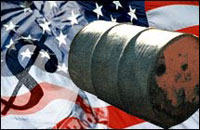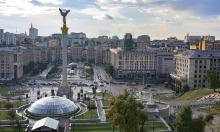Eight years of Putin’s reforms earned Russia trillion petrodollars
Oil prices have recently reached the level of 99 dollars per barrel, making market traders believe that the time when the price hits the level of $100 per barrel and higher is just around the corner. However, oil was nearly four times cheaper during the first years of Putin’s presidency, the Vedomosti newspaper marks.

If average annual oil prices remain the same, but natural gas becomes more expensive, Russia is going to gain about $290 billion for oil, gas and petroleum products export, specialists say. The export of raw materials is supposed to bring about $800 million profit daily. If oil prices stay on the level of $100 per barrel, annual exports and budget incomes would receive about $90 and $70 billion more, respectively, than in 2006, when oil cost $60 per barrel.
In 2007 oil and gas incomes are going to reach $220 billion (151.1 billion or 60.9 percent of export incomes in January – September, Russia’s Central Bank said. Russia’s oil and gas exports are expected to total 893 billion dollars in 2000-2007. The number will most likely make a trillion dollars by the time the new president takes office in Russia next spring.
Expensive oil gave many opportunities to the Russian government. State-run investment plans became much less dependant on foreign investments. Petrodollars are capable of solving quite a number of problems including the raise of pensions and public sector employee wages.
The profit of oil and gas enterprises received during the above-mentioned period made up $150 billion. The companies will pay 700-730 billion dollars of taxes and duties to the government during 2000-2007.
Opinions vary on how the government should spend the unexpected wealth. Some officials say that investments in strategic industries are a necessary, but a transitional measure.
Russian authorities have spent not less a trillion dollars on the social sphere during eight years of Putin’s presidency. But now it is impossible to find out how many petrodollars were contributed to this amount. Expenses were rising along with the GDP. This year about $170-180 billion is expected to be spent on social needs.
The inflow of petrodollars has a downside too: it stimulates the ruble strengthening and the inflation rate. These two factors may destabilize Russia’s economy.
Translated by Ksenia Sedyakina
Pravda.ru
Subscribe to Pravda.Ru Telegram channel, Facebook, RSS!





